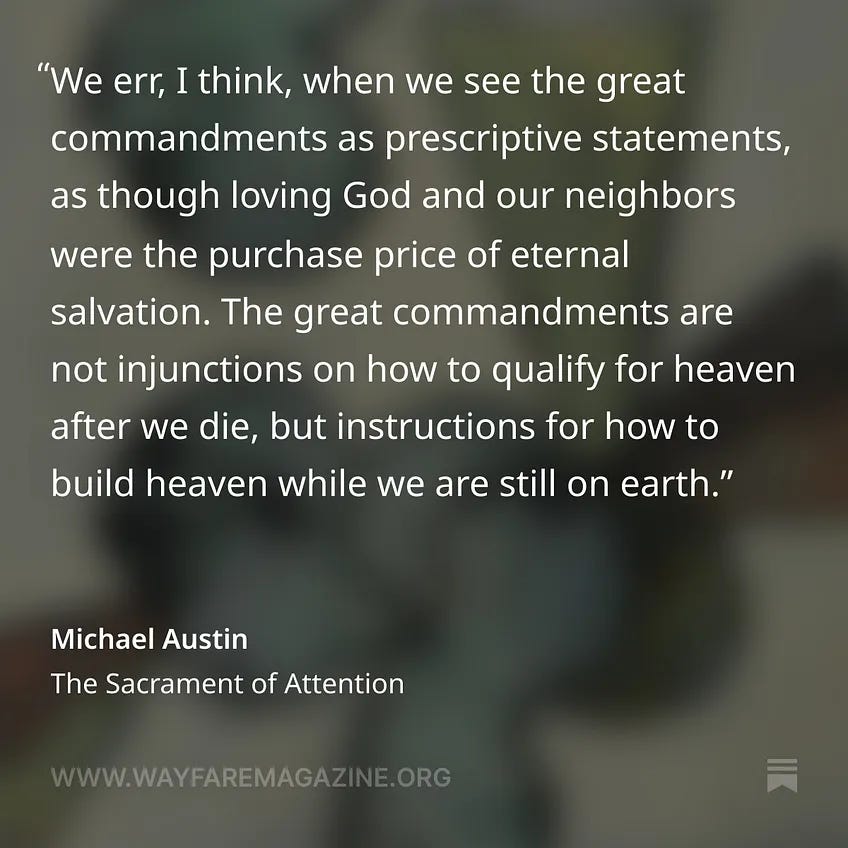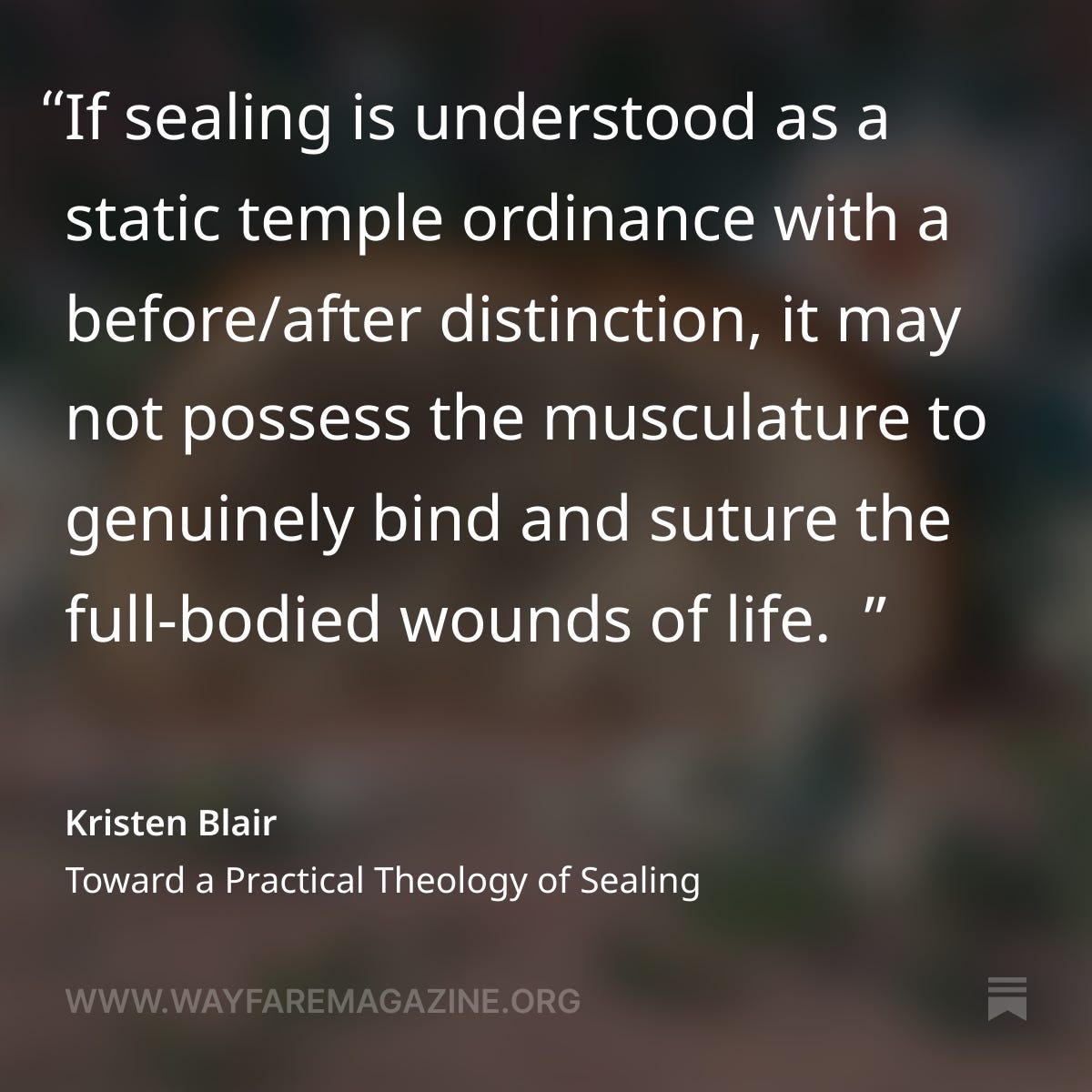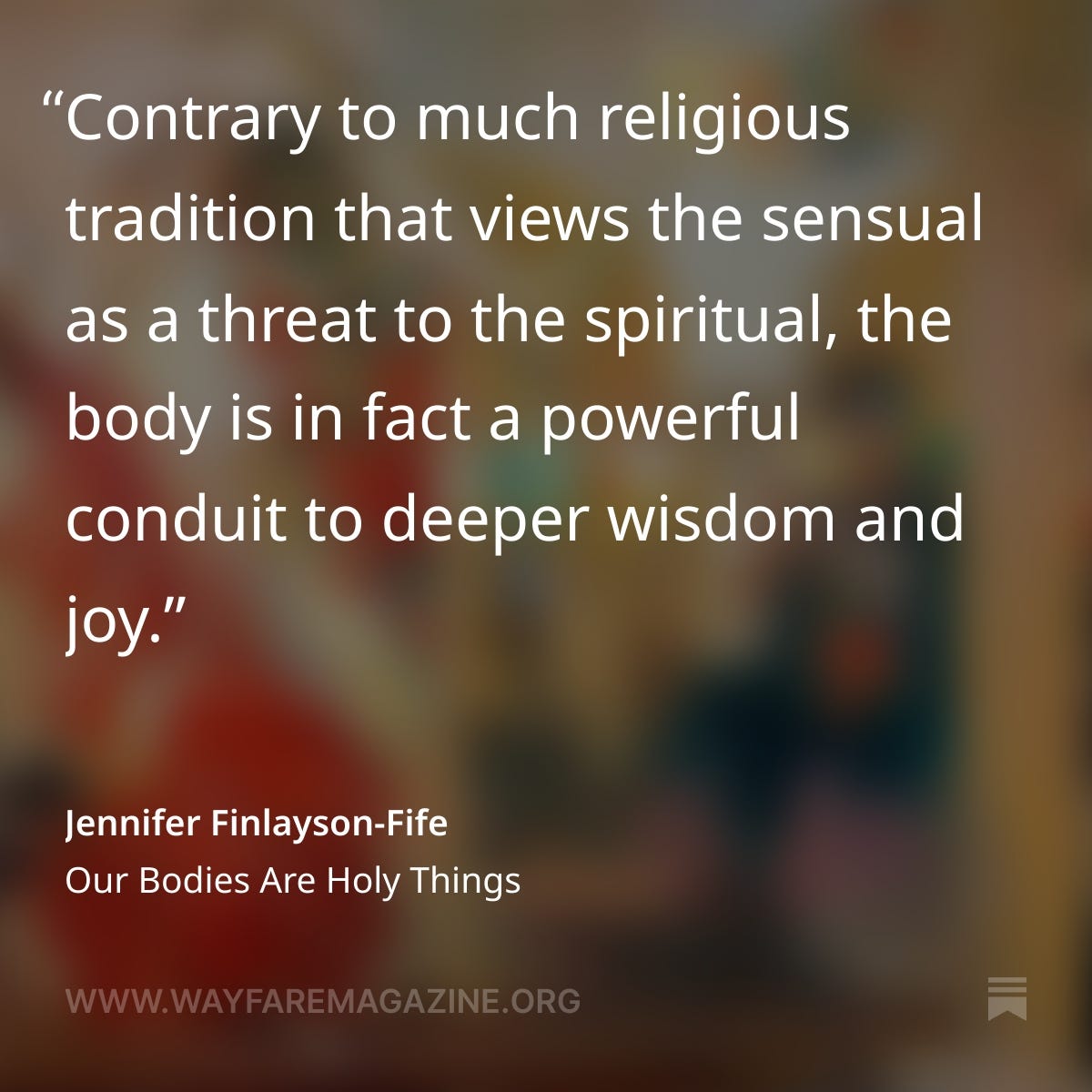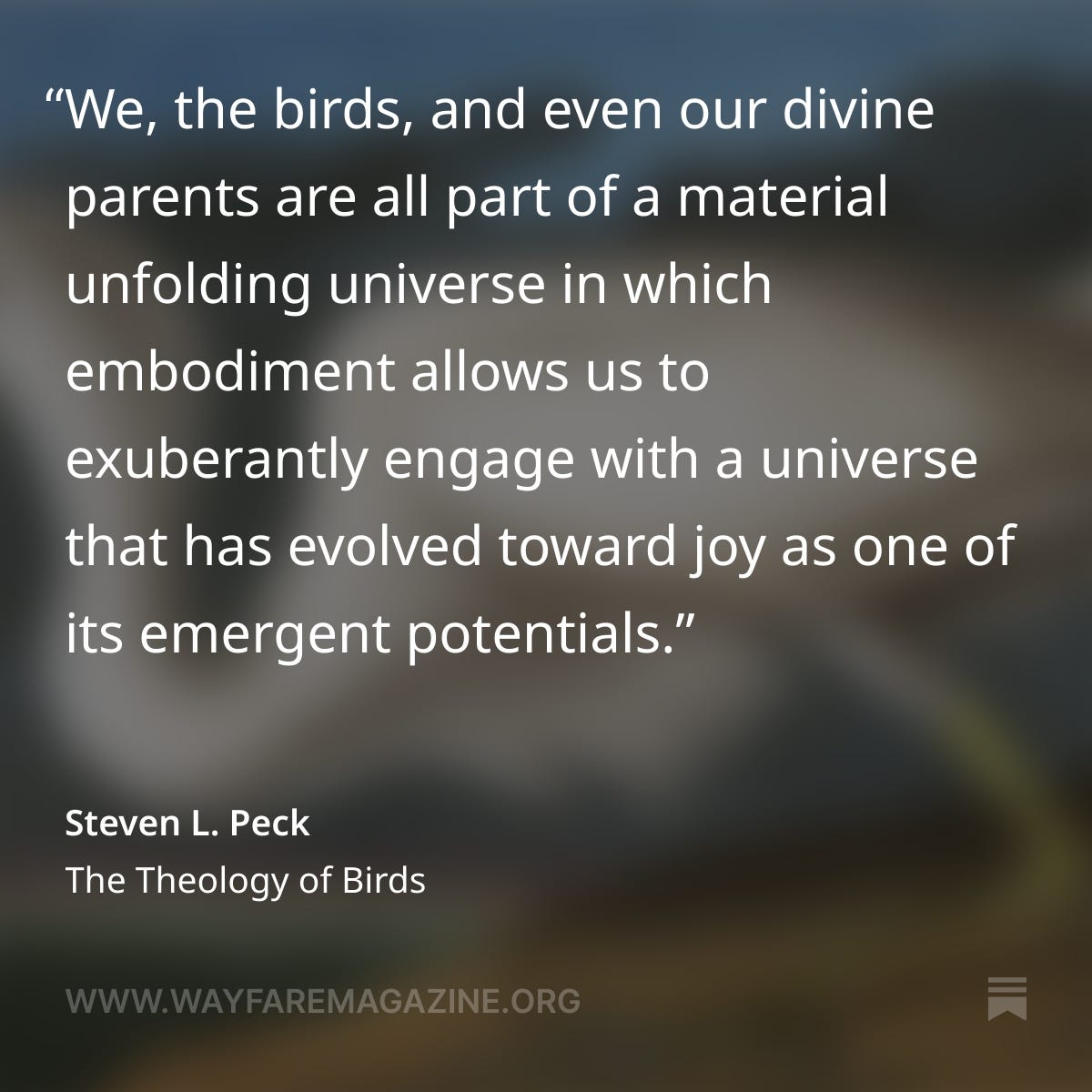What is heaven like? (And what do we do with polygamy?)
Faith Matters resources to accompany your Come Follow Me study: November 10-16
God wants to exalt His children.
Why do so many creators seem to suspect that heaven is boring? I wonder if it’s because we can’t seem to conceive of a perfection that’s not, in some sense, totalitarian—all smoothed out by God’s all-encompassing will. …
I’m a writer and also a believer. To be specific: I believe in heaven, art, humor, the agency of humanity, and the persistence of individual being.
None of this is normally a problem, or rather, these (and other important) elements have been fertile ground for exploration in both my writing and daily and religious life. But lately, I’ve been thinking about them all together as a set and have discovered that I’m unsure how they ultimately fit together. If we’re talking about a heaven filled with perfect beings working in line with God’s will, what is comedy about? Do perfect people crack jokes?
The possibility of heavenly laughter is, for me, an important question. As with all theological and aesthetic concepts, so much depends on how you define the nature of God, evil, agency, etc., and I don’t know that any of us stuck here in mortality can truly, fully understand such concepts. But in Latter-day Saint thought, life equips us to try. Per the example of Joseph Smith, I find that cramming as much humanity and embodiment as possible into the equation makes sense.
—William Morris, “Heaven’s Laughter”
A journaling invitation from At-One-Ment, by Thomas McConkie: “What if this very body, this very world were already heaven? Rather than relating to this life as a test to get somewhere better, what if you treated this very moment as the better place you were hoping to get to? You’ve already arrived. This is it. How would you act differently if this were the case? In what way do you start to perceive things differently when you take this to be true?”
God blesses people who obey His laws. God blesses me as I obey His laws.
How do we hold both images in our hands: a loving God who brings about miracles and a loving God who allows us to suffer in our fallen world?
Sometimes, it might feel easier to cast judgment. If only they had prayed harder, if only they had gone to church. Oh, there must be more to it than we can see. But this transactional view of God—one that insists that rewards are always tied to actions—doesn’t mesh with our understanding of grace.
—Jennifer Bruton, “The Problem with Miracles”
As I practiced slowing down and extending myself grace, I began to notice how different it felt to have effort produced by love instead of by the fear of disappointing God. I experienced a shift – from thinking that God would love and bless me once I had proven myself to him through my own perfection, to knowing that he already loved and blessed me in all of my imperfection. I came to see that the pain of my experiences wasn’t a manifestation of his displeasure towards me, but was actually the result of the realities of mortality that helped me carve out space in my heart for him. I used to see instances of darkness and doubt as interrupting my faith journey. I see now that they propelled it, deepened it, and helped it be more personal and relevant.
—Bonnie Young, “Damned by Perfection,” from A Thoughtful Faith for the 21st Century
In a faith culture that values “bearing testimony” and the confession of certainty, we often equate spiritual depth with unwavering confidence in our shared beliefs. The ego certainly prefers a spirituality focused on certitude and transactional agreements with God over a spirituality that asks us to love one another in our shared uncertainty and suffering. Why wouldn’t we want control in a fallen world? Obeying the rules in exchange for security is a desire that certainly makes sense. Our impulse to find order and predictability in the midst of disorder and pain is both understandable and deeply human.
But as we endure life’s inevitable losses, our spirituality tends to become one of recognition—a spirituality that perceives the beauty and wonder in life amid the necessary sorrows and hardships. And though our souls can feel a deep order within reality—divine truths we are all subject to—we understand that faith doesn’t grant us certainty or obviate suffering. Rather, it offers us solace, evidence of God’s love in sublime moments, and glimpses of the eternal that anchor us in a world full of loss.
—Jennifer Finlayson-Fife, “Our Bodies Are Holy Things”
One word that Christianity often employs as code for “the imitation of Christ” is “obedience.” Obedience, like imitation, rubs against the grain of contemporary culture. It has all those connotations of authoritarianism, inauthenticity, robot-like conformity. I have found, in this regard, the words of Timothy Radcliffe to be a powerful corrective to the cultural baggage of obedience. “The obedience of faith,” he writes, “is more like listening expectantly to a Beethoven string quartet than to obeying a police officer. It’s a response to the authority of its meaning.” No one compels us to love the music of Beethoven or a sonnet by Shakespeare. If we are attentive and open, susceptible to its beauty and power, then we respond to its sway over us. It washes over us, draws us toward a recognition of the rightness of this experience so far beyond the cacophony of traffic or the tedium of our own voices. The parallel is not perfect but it is close. We are drawn to Christ to love and imitate and yes, obey, because his love is non-coercive, his tenderness matchless, his every interaction with his friends and strangers the ideal of how any one of us can be most fully alive and responsive in this world of human relationship.
—Terryl Givens, “Agency: A Power Grounded in Relationality”
Heavenly Father made it possible for families to be eternal.
As a missionary, I had the idea that the doctrine of sealing (which I associated with the saying “families can be together forever”) was a contrast idea: an alternative to what I saw as the harsh, punitive teaching that death separates earthly bonds. This idea, which I think is not terribly uncommon, has its roots in Joseph Smith’s own formative experiences, including his family’s grief at his brother Alvin’s death. The minister at Alvin’s funeral insinuated that the child would go to hell because he was unbaptized, reflecting the predominant (though not universal) Christian understanding of the time.4 But when I presented the triumphalist conclusion of contrast as a young missionary, I did not receive the joyful exclamations I was expecting. As far as I can recall, everyone I talked to believed that they would be with their loved ones after they died. …
Since I taught with such energy as a young missionary, I have long thought, is this the place to begin a theology of sealing? It is these ruptures to which sealing speaks, these multiple tragedies of time and circumstance and fate. Surely the answer is yes, and profoundly so. Surely we must believe that there is life beyond the pietà, hope after tragedy, meaning beyond brokenness. But I wonder if the impulse to a life beyond stunts an ability to behold the present. I wonder if sealing is as much about the present as it is about future reality. I wonder, in fact, if reversing the order of emphasis changes the way it is experienced as meaningful. In this sense, I am proposing a shift from approaching sealing as theory to approaching sealing as practice. …
Might sealing extend to the daily, mundane practices of family and kinship relations? If sealing is ordinance only it may be seen as a static thing, perhaps higher than our daily lives. But if sealing is ordinance and incorporation, theological attention widens. It necessarily includes attention to the presence of domestic abuse, questions of gender equity, and the demands and values of caregiving, among others. …
Could we think about sealing as what binds us both in and out of mortality, what we weave together with the divine through our failings and efforts and work to make our relationships deep and lasting and joyful? This is real work, requiring the almost impossibly daunting task of genuinely confronting one another, of reconciliation and repair, of reparations and transformation. To employ another metaphor, this is the movement from rhapsodizing about the beauty of flowers to getting on your knees in a garden. Figuring out what binds us on earth in addition to what draws us to heaven, this is life work. It includes what happens in temples, but it does not end or even begin there—an ordinance does not provide a guarantee for safety and happiness no matter how holy the authority. What draws hearts together, what salves wounds?
I am a student of these questions, bumbling along. But I think there is pull from more than one direction. What binds us may indeed be divine cords exercised through priesthood office. But may it not also be cords of loyalty, forgiveness, justice, harmony, and healing? Do our distinctions between these things finally lose all meaning before the expanse of God’s endless, ever-thirsting divine love?
—Kristen Blair, “Towards a Practical Theology of Sealing”
We are blessed in our faith tradition to have an understanding of families that spreads so much farther and goes so much deeper than just the nuclear family unit. We believe in a family that can be sealed together for eternity, through countless generations, from child to parent to grandparent. It’s a family unit that is just as important and serves just as many purposes as the modern nuclear family. The branches of this eternal family tree spread wide enough to encompass siblings and cousins and aunts and uncles. Even when loved ones have passed from this life, we have the power to graft them onto our living tree through posthumous temple work. And, if you dig down far enough, you’d find that we all spring from the same roots. You. Me. Your neighbor. A stranger on the other side of the planet. Across distance and time, we share both the same heavenly parents and the same physical ancestors. We call each other “brother” and “sister” for good reason.
—Jeanine Bee, “Hymn of the Alloparent”
For me, the temple points to something bigger and grander than it’s often given credit for. It’s not just my nuclear family that can be exalted for eternity; it’s the whole human family. And it’s not just a ticket into heaven; it’s the healing, redemption, and making right of all that is wrong in the human family—all of creation. It requires remembering all that went wrong and enacting ways to make it right. It involves immersing ourselves in the power of the divine, as well as in the reality of humanity, infused with deep time and ridiculously drawn-out patience.
—Hannah Packard Crowther, “Redeeming” from Gracing
Saints justly celebrate the communal nature of the heaven we anticipate, one that reflects “the same sociality that exists here,” only coupled with glory. The doctrine of eternal marriage and family has largely determined our concept of sociality in heaven. However, sociality is a term far broader in scope than the nuclear or intergenerational family. I love my family immensely. I also relish friendship—which Joseph called “the grand fundamental principle.”
—Terryl Givens, “Heaven in Smaller Form”
Joseph Smith was less concerned to know his lost brother was waiting in heaven than, simply, to know his lost brother again. And thus, the religious world he imagined was one in which the centrifugal economic and social forces tearing his family apart were stilled, and human beings were knit together again. His religion was a way of describing a deep truth about human nature: that we are not, fundamentally, individuals tasked with self-creation, but that we are social beings, shaped by those around us more than by ourselves.
In his lifetime he expressed this impulse through polygamy, the gathering of the Church, and sealing. In our lifetimes the Church expresses this impulse through celebration of the Western nuclear family. And understanding that religion is something deeply marked by history and culture allows us to see the fundamental hunger lying behind both of these expressions; to perceive them as different, but of a kind. Liberation, authenticity, finding who we are is not a project of disassociation and separation. Rather, liberation is recognizing our belonging; that we are shaped by others, by our communities, and by our families, and in that recognition finding reconciliation with ourselves and with others.
—Matthew Bowman, “Spiritual Cartography”
Plural marriage is acceptable to God only when He commands it.
Unpacking Polygamy: The Complete Series
Every four years, Latter-day Saints are challenged to wrestle with our history and theology around plural marriage. So this year, we decided to lean in and do a deep dive.
Exorcising the Ghost of Eternal Polygamy
YES, says Carol Lynn Pearson, well known-poet, author and playwright. In her thoughtful and passionate response to our Big Question, she reflects on her own painful relationship with the subject of polygamy throughout various stages of her life.
Presentism, Polygamy, and the Dangers of a Single Story
Not so fast, says Jessica Brown. Let’s especially not be too hasty in summarily condemning its past through our presentist lens. And let’s prudently examine the side effects that wholesale renunciation of plural marriage would produce in the present.
One Couple's Wrestle with Polygamy
In their response, Susan and Bill Turnbull make a strong case against plural marriage in principle while also holding space for its practice in our history.
I have ached… at the limits of theory (theological or otherwise) for explaining or even addressing the profound pain of women’s experiences with doctrines of sealing, including the complexities of polygamy and the myriad unanswered questions, uncertainties, and unspoken implications within its practice and legacy. I have longed to figure out what is going on, what is “true” beneath layers of time. As the spiraling rope unspools, I have come to the limit of my ability to comprehend a true story with the harshly pristine tools of theories and facts. Telling a true story will always be a question of perspective. Telling my grandmother’s story must honor what was true for her, which I may never fully know as I live and breathe in my time and place. Telling a true story about polygamy requires, also, the perspectives of those who would tell truth differently than I would. Telling a true story about sealing is not, then, about finding the right language to express a correct doctrinal idea. It is perhaps not about uncovering the discursively pristine exposition I once longed for, the exact framework that would give it sense, meaning, redemption. …
Perhaps living into a doctrine of sealing is less about pursuing intact theory and more about binding the mundane toward meaning.
—Kristen Blair, “Toward a Practical Theology of Sealing”
Heavenly Father wants me to focus on eternal things.
From a transformative perspective, worldliness is any attempt to find security through finite means—safety, pleasure, the esteem of others, and the insatiable need to control our circumstances. The gospel invites us to leave this worldliness behind and find security in the only Reality that is worthy of our hearts. We are not sanctified by perfecting the false self but by waking up to an entirely new dimension of self, whose center of gravity is Christ.
—Thomas McConkie, At-One-Ment (read an excerpt here)
We’re accustomed to thinking of the sacred as something apart, exalted. And we have good reason: the roots of the word sacred contain the idea of something protected and removed from ordinary settings, everyday experience. Sacred space is an ancient land, a walled garden, or the top of a mountain, the higher the better. But the restoration introduced a low-elevation version of sacred geography. Right here, at ground level, among normal places and events, sacred things happened. …
As the Restoration unfolded, these geographic circles extended outward with no apparent limit. A general principle came into view, a kind of axiom of the Restoration: the whole world is holy, because it is where we encounter God. In time, Joseph understood that these sacred circles, always widening underfoot, were both geographic and metaphysical. The spirit world? Look around, it’s here. Heaven? Also here, wherever you are. Eternal life? The people and relationships closest to you. For better or for worse, our relational heaven is here and it looks a lot like now, but with the added burden of glory. …
Joseph’s life accelerated toward its close, and the revelations rolled toward a full-blown theology of divine immanence, the idea that deity exists inside the universe and its conditions, not beyond or outside. The prophet came to understand a God present in the time and space of creation, not just as an occasional miracle or an abstract omnipresence but in the integral, elemental matter of the world. “The elements are the tabernacle of God,” Joseph declared in a sweeping theological revision of anthropology, christology, and ecology. “Yea, man is the tabernacle of God.” God’s solidarity with creation is a question both of metaphysics and of ordinary physics, of God’s material, embodied being. “God Himself was once as we are now, and is an exalted man, and sits enthroned in yonder heavens!”
—Rosalynde Welch, “Airborne at Low Elevation”
Zion, ultimately, is a city of friends, but with friendships deepened by a sacramental relationality enabled by the love of Christ—an alchemy of grace where acquaintances can be transformed into kin. For Latter-day Saints, perhaps our most beautiful doctrine is that families are forever, and so are our friendships. “That same sociality which exists among us here will exist among us there, only it will be coupled with eternal glory.”
—Zachary Davis, “A Feast of Friendship”
Heavenly Father and Jesus Christ have immortal physical bodies.
Knowing that I have a Heavenly Mother who looks like me, who has a body maybe not exactly like mine but pretty close to mine, with all the parts that I have, and that that’s good? … It creates confidence in me, and I don’t feel the same desire to hide. To know that the functions and the parts of my body are divine gives me more appreciation, and I think that for women knowing the goodness of their bodies and the goodness of their sexual response and being able to tie that to our divine mother, that’s really powerful.
—Bonnie Young, “Sex Educated”
Our relationship to the physical world itself has been shaped in surprising ways by Greco-Roman culture and philosophy. For example, the early Christian movement incorporated the idea of Platonic forms, which says there is a perfect world “out there” in contrast to the deficient (and “fallen”) world we live in. (Many centuries later, Joseph Smith revealed that the Fall of Adam was in fact necessary to make possible a fullness of joy. In the restored gospel’s telling, physicality is not a fall from anything. It is a glorious ascent. The body is not fallen—it is the god and the goddess in embryo.)
… Revealed scripture clearly states that the transformative process for Christ (and we can suppose it is the same for ourselves) isn’t just a movement of “up and out.” It’s not a matter of passing the test in a body then flitting off to the “real world” of spirit. Exactly as much as there is an “up and out,” a transcendence in the spiritual journey, there is a moving “down and through,” an immanence, into the heart of the earth and the very heart of matter.
—Thomas McConkie, At-One-Ment (read an excerpt here)
The more I excavate the historical and theological significance Mormonism grants the physical body, the more insistently the question presses on me: what if being embodied is a task, and not simply a state we inhabit?
To the scandal of deists, secularists, Protestants, and Catholics, Joseph Smith claimed that the body was not something to be abstracted, exploited, or transcended; to Latter-day Saints, embodiment was, as one observer scoffed, “a necessary step in their progress towards perfection and divinity.”Joseph Smith’s claims about the embodiment of God and the thoroughly material nature of existence were widely recognized by contemporary observers as striking theological innovations. Embodiment enabled our progress and empowerment, Smith claimed—but it also, principally, promised our joy. “The great principle of happiness consists in having a body,” he exulted: a physical body with enduring particularities, enmeshed in salvific interdependent relationships, and capable of infinite generativity.
I didn’t always grasp this “great principle.” In fact, it took years of immersing myself in the study of baroque Catholicism, with its embodied extravagances, to recognize the early Mormon romance with materialism. A compelling tale can be told about the latter’s complex theological and historical legacy, but there’s a personal one as well: it’s a tale of conversion, in a sense, from my own conflicted relationship with the body to an awakening to embodiment as a fundamentally spiritual task.
—Rachael Johnson, “Eternal Lives, Embodied”
Christ asks me to be whole. He sees all of me, not a spirit or a body. His grace accounts for all woundedness. He transcends my tendency towards dualism. His atonement is not meant to simply mitigate my imperfect brain; it is an enabling power that can remake all of my soul. And in the quiet moments when I try to connect with the divine, I glimpse the complete compassion my Heavenly Parents have for their children.
—Jeff Clark, “Hoping for Embodied Grace”
What if Latter-day Saints held tight to Jesus’s own emphatically repeated claim that divine indwelling is real and redemptive and then—breaking with Trinitarian thinking—paired divine indwelling with the Restoration’s claim that God has a body of flesh and bone?
If all spirit is matter, what if divine indwelling is material?
Or, if even God has a body, what if divine indwelling is about bodies?
Thinking this way would recast Christianity. It would commit us to living in a new world—premortal, mortal, postmortal, it doesn’t matter—a world that consists exclusively of bodies and matter, whether coarse or subtle. And, too, thinking this way might recast how we think about salvation.
—Adam Miller, “The Necessity of God”











